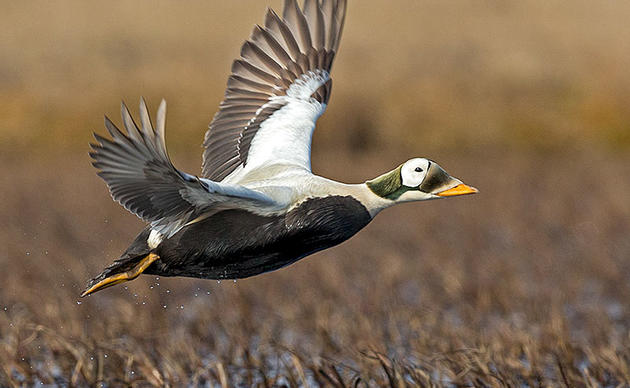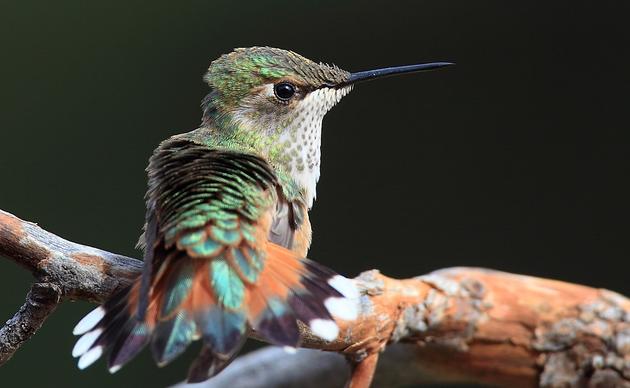In early May, I was working from Prince of Wales Island, scouting sites for the upcoming Southeast Alaska Birding Trail. After days of bird-watching from Coffman Cove to Craig and beyond, I was thrilled to see a peregrine falcon perched literally on the side of the road. We quickly pulled over; through binoculars I could see that he was a banded bird and I immediately tried to make out the numbers before the bird flew away. The falcon sat on a small pile of tree bark and as I cautiously got out of the car and slowly approached closer and closer to get photographs, he continued to sit in place, intently watching my every move, but making no move to depart himself. It quickly became apparent to me that this falcon was not doing so well. He must have been hit by a car, I thought, judging by his apparent inability to fly, his ruffled wing feathers, and the all-too-unwary posture as I continued to walk closer. As I neared within a few feet he flailed his wings and hopped away but still did not fly.
After a lot of deliberation, I decided to carefully capture the falcon and transport him to the Alaska Raptor Center in Sitka for treatment. This would entail a long journey from the Hydaburg Road. First, there was an overnight in Craig, then a ferry ride from Hollis to Ketchikan, and eventually a commercial flight to Sitka, where the Raptor center took him in. Throughout the travel, the falcon stayed calm and quiet. Raptor center staff found no broken bones and no swelling in his wing, no apparent head trauma or other injuries. Their initial assessment was that he’d be releasable in a few days.
With the falcon in good hands, I logged onto my computer and entered his band number into an online federal database. The report I got back allowed me to piece together his story. The falcon was male, 11 years old, and was first banded as a hatch-year bird in 2007 at a banding station in Sausalito, California. His light-colored plumage indicated he was likely an Arctic subspecies, and I imagined that he was hatched in the Alaskan Arctic, perhaps the cliffs of the Colville River. Peregrine falcons exhibit a sort of "leap-frog" migration, where the high tundra breeders will migrate to the farthest reaches of the southern hemisphere. In the fall of 2007 this falcon was making his first flight to his wintering grounds, perhaps as far away as Chile. He was likely migrating back to far north Alaska when I found him on a lonely road on Prince of Wales Island in Southeast Alaska.
For 11 years, this falcon had been making his migration from the Arctic to South America and back again, and this time something had not gone according to plan. Falcons can live into their late teens in the wild, but fewer than 5% make it to the ripe old age of 11. Unfortunately, after a few days in rehab refusing to eat, this peregrine falcon passed on, probably of simple old age. When I found him he most likely was worn out from a long journey of many thousands of miles, and had stopped to take his final rest. Of all the tribulations migrating birds face, this falcon powered through them for 11 years and almost certainly passed on his good genes to many offspring. Although this story ends sadly, we were able to share his inspiring story with others and learn something from his last peregrination. Like all migratory birds, he reminds us that, even though places like Alaska and California may seem far apart, we are all connected to each other through the remarkable network of bird life on this planet.
—Melanie Smith was the Conservation Director for Audubon Alaska at the time of this publication.



